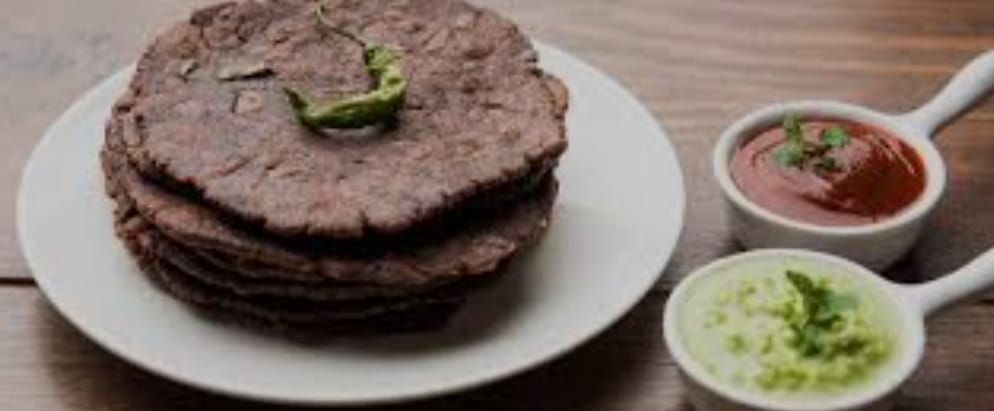Dr. B. Dayakar Rao, serving as the Principal Scientist and CEO of Nutrihub at the Indian Institution of Millet Research (IIMR), is widely recognized for his groundbreaking contributions to millet value chain development. His nationally acclaimed strategic model integrates on-farm production, diversified processing, product development, machinery retrofitting, and successful commercialization under the “Eatrite” brand.
As the CEO of Nutrihub, Dr. Rao played a pivotal role in orchestrating the establishment of 400 millet processing clusters across the country. This initiative reflects his commitment to fostering agricultural innovation and expanding the reach of millet-based products.
One of Dr. Rao’s significant accomplishments lies in his role in forging public-private partnerships for millet products. This underscores his invaluable contributions to advancing agricultural practices and promoting the adoption of millets in diverse food products.
In an exclusive interaction with The Interview World, Dr. B. Dayakar Rao sheds light on the significance of millets as climate-smart food. He also discusses the democratization of millet cropping and the unique scientific knowledge held by IIMR regarding millet. Here are the key excerpts from his insightful interview.
Q: How will millet as a climate-smart food address the challenges of food security in India?
A: Fortunately, the Government of India has brought millets back into the spotlight, acknowledging their importance. In 1955, millet cultivation spanned 32 million hectares, but today it is only 13 to 14 million hectares, representing a significant loss of 20 million hectares.
Although millet is now cultivated, it is mainly driven by demand creation. Previously, there was a lack of demand for millet, as it wasn’t considered a staple food. Additionally, there was no effort to brand millet as a nutritious crop capable of addressing nutrition security.
Thankfully, lessons have been learned, and millet is now promoted as Shree Anna or smart food, emphasizing its nutritional benefits. Smart food encompasses its nutritional value, including good carbohydrates, high protein content compared to other cereals, quality proteins, digestibility, and an array of micronutrients like iron, zinc, and calcium. For instance, finger millet or ragi contains approximately 364 mg of calcium per 100 grams, surpassing the calcium content in milk.
While millet has many virtues, some issues persist due to insufficient research, such as palatability, shelf life, and others. The International Year of Millets, declared by the Prime Minister in 2023, brought these issues to the forefront, transforming a demand problem into a supply problem.
The awareness led by the Prime Minister has uncovered a significant gap in supply, estimated at 40% less than the demand. Previously, millet was diverted for animal feed, affecting prices, especially for startups like the 400 associated with Nutrihub. This year, there has been a notable price increase, ranging from 30% to 80% across nine millets.
Addressing the supply issue involves expanding cultivation areas and enhancing productivity. IMRI, under ICAR, is implementing strategies to bring more areas under millet cultivation. While millet is typically a dry land crop, efforts to introduce more varieties and cultivation practices aim to increase productivity. Despite the average yield being one tonne per hectare, certain areas have demonstrated a potential yield of eight tonnes with proper management practices, showcasing the crop’s high potential.
Q: How is IIMR making democratizing millet farming in India?
A: For a farmer, the income generated is of utmost importance. We are making both forward and backward integration. Backward integration involves delving into the cultivation of millets, a practice gaining significance as millets are increasingly viewed as a commercial crop.
The perception of millets has evolved, especially among urbanites who prioritize health-conscious choices in their diet. This shift in consumer behavior has prompted farmers to adopt new perspectives and invest in crop management practices, moving beyond the traditional approach of sowing seeds and waiting for harvest.
The dynamics have changed significantly. Today, farmers need to focus on education and literacy regarding production practices, crop management, and achieving higher yields. In these areas, IIMR takes the lead, recognizing the demand and value addition at both the farm gate and market levels.
The awareness among farmers is growing, albeit gradually. Transitioning to a new mindset and investing in crop management practices require time. However, the essential factor for expanding cultivation lies in increasing the producer’s share in consumer rupees. This shift in consumption patterns also plays a pivotal role.
Constraints in the short term are due to the disconnect between production and consumption markets. We can expect a positive trajectory in the medium to long term. We can resolve these issues with better collaboration. Eventually, this will lead to increased supplies, decreased affordability barriers, and a subsequent rise in production. This, in turn, will boost farmers’ incomes and contribute to a reduction in food prices.
Q: What sort of strategy the government is doing to increase the MSP for millets?
A: The Minimum Support Price (MSP) is essentially an announcement, and unfortunately, it often doesn’t translate into a tangible difference. To truly make an impact, the government must actively engage in procuring the produce. This becomes particularly crucial when the market prices fall below the MSP; in such cases, the government needs to step in and ensure procurement.
Thankfully, we are currently in an international era where MSPs prevail, offering favorable prices. However, there’s a significant challenge – a considerable number of people, especially those in remote areas, remain unaware of the MSPs for crops like Jowar, Bajra, and Ragi. Despite the availability of MSPs, accessibility remains a hurdle.
On a positive note, certain state governments are taking proactive measures to address this issue. They are introducing millet machines and actively procuring grains from farmers. This is a notable step forward, particularly for major millets. It’s worth mentioning that there are about six types of minor millets.
States such as Chhattisgarh, Karnataka, and Odisha are pioneers in this effort, announcing MSPs and ensuring the procurement of millet. However, it’s essential to acknowledge that the value chain for millet is not as mature as that of rice and wheat, which have been in use for several decades. While rice and wheat have well-established value chains developed over 60-70 years, millets are relatively new to the scene. As a result, resolving the challenges in the millet value chain will require some time and concerted efforts.
Q: How has the demand for millet risen globally after the announcement of 2023 as the International Year of Millets?
A: Millet gains interest in various African and Asian nations, and it’s gradually gaining traction in Europe, America, and Australia. Our primary focus should be on these three regions. The initial goal is to identify countries where we can make a significant impact and promote the development of the millet value chain. It’s important to note that the millet value chain is still in nascent stage. It requires time to reach saturation worldwide. India stands out as the global hub for millet.
Despite its significance, the scientific aspects of millet remain unfamiliar to many, including major multinational companies. Only India has the scientific knowledge of millet in the world. The valuable knowledge in this field originates from institutions such as NutriHub, a component of the Indian Institute of Millet Research.



